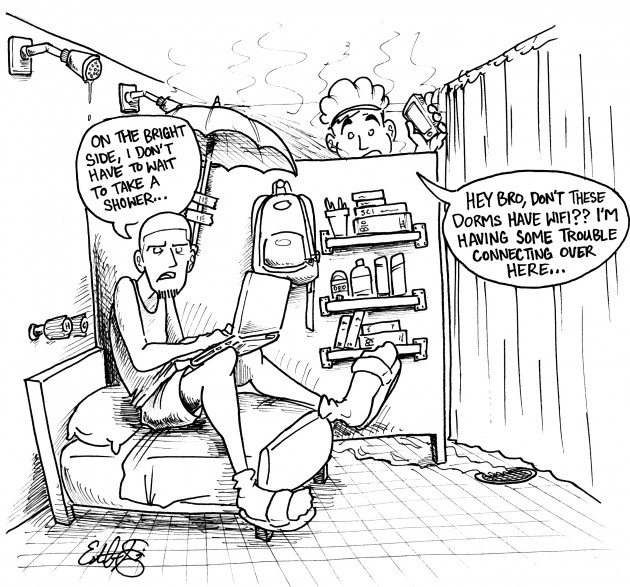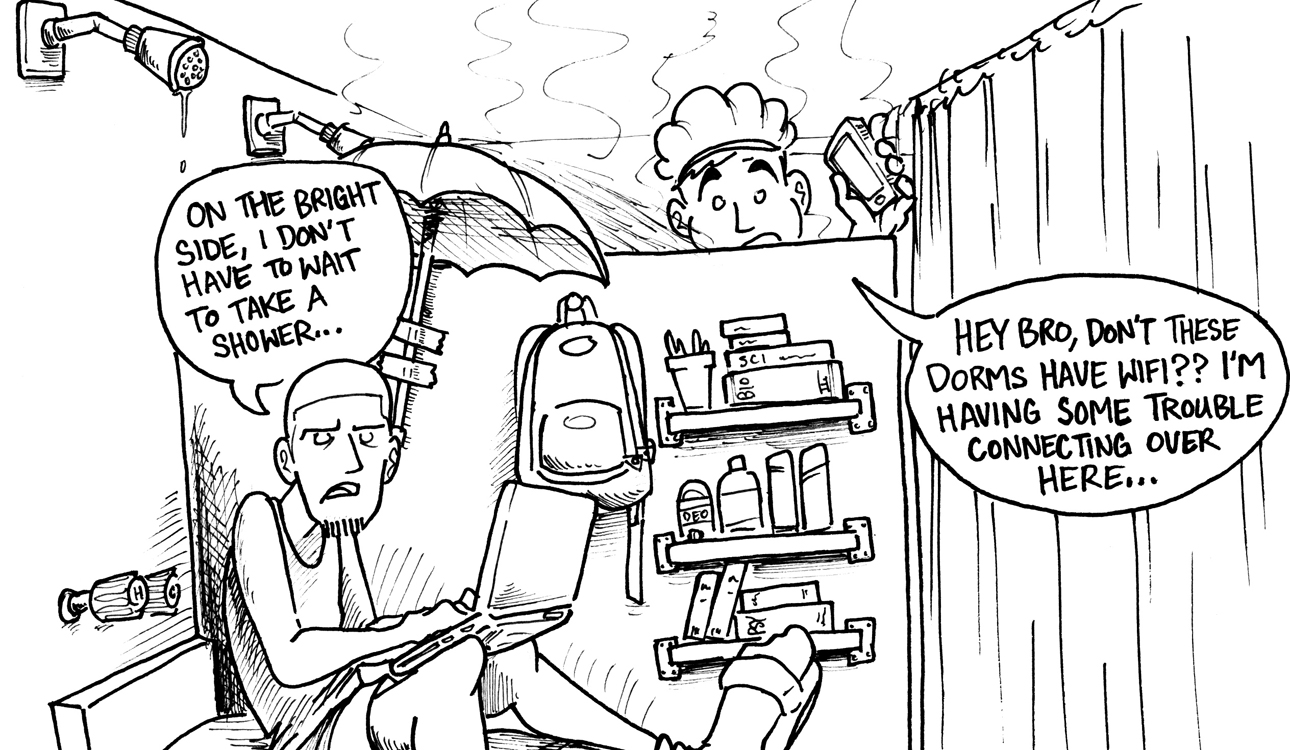
At last Thursday’s Student Senate meeting, the Senate voted to recommend renovating five university dorms – Collins, Penland, North Russell, South Russell and Martin. While the plans aren’t final, they will likely call for adding additional student lounge and study spaces, improving bathrooms, replacing floors and ceilings and improving the technological capacities of the residence halls. The plan would be implemented over the next 15 to 20 years.
The Senate overruled a veto by student body president Zach Rogers, who opposed the bill because of the cost of adding Wi-Fi throughout the dorms. Rogers said he supported the bill but was concerned about the estimated $750,000 to $1 million needed for Wi-Fi in the dorms.
We agree with Student Senate. Baylor’s largest dorms are due for upgrades, and there is a reason some of them aren’t used for summer camps when Baylor wants to put its best foot forward for prospective students.
But before construction begins, there are some things to consider as Baylor addresses its housing situation.
The biggest issue Baylor needs to fix before upgrading the dorms is making sure there are enough options for incoming students who are required to spend their freshman year on campus. What good does an improved study room do if students have to live in that study room because of excess occupancy?
Baylor has already moved to add one more dorm via the East Village project. But prudent projections are necessary to ensure that even if the student body increases over the next 15 years, the big five dorms won’t be overcrowded.
Assuming study rooms will actually be available to students in the renovated dorms, Baylor should also consider the plan’s time frame and its impact on the dorms’ appeal. The university has to ensure that upgrades done now won’t need additional improvements after the 15- to 20-year process is finished. In other words, if the first set of renovations comes in 2014 and Baylor completes the final pieces of the plan in 2034, the 2014 upgrades must still be on par with those of 2034. That might prove a difficult task, as a brand new study room might be much more aesthetically appealing than a 20-year-old study room. If Baylor sees this as a potential problem, perhaps the university should consider a smaller window of time to complete these renovations, like five or 10 years.
Finally, technology needs to take priority in upgrading these dorms. With the increased usage of smartphones and tablets, neither of which can utilize the Ethernet-only Internet connection currently available in dorm rooms, Wi-Fi is absolutely necessary for future generations of Bears.
If Baylor wants to consider itself on the cutting edge of technology, there is no excuse for students to lack the same wireless Internet option that has existed for more than a decade.
Baylor would take a much-needed step with these proposed renovations. To deem the upgrades a success, though, they have to be completed in a timely fashion and in students’ best interests.






